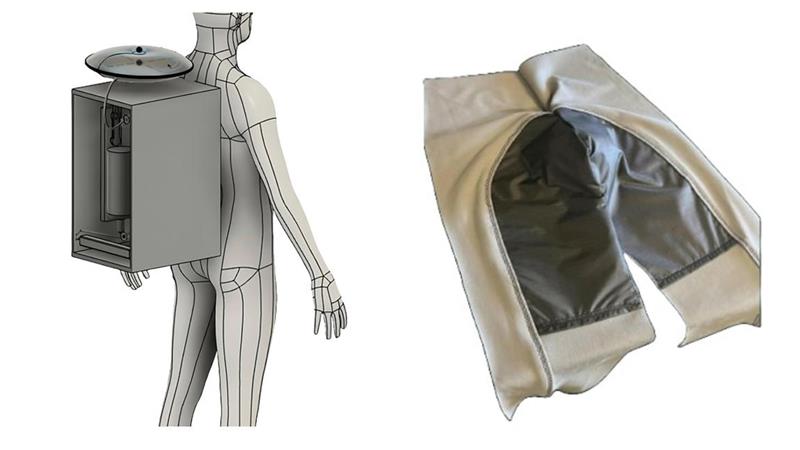The blockbuster film, Dune, has inspired a new full-body spacesuit that can recycle its wearer’s urine, allowing them to walk for further during any future exploration.
Even though it is true that in space, no one can hear you pee, astronauts on spacewalks have few options when it comes to answering the call of nature. Relieving yourself inside your spacesuit is both uncomfortable and unhygienic, but it is also wasteful. Wastewater on the International Space Station (ISS) can be recycled, but pee produced out on a spacewalk cannot.
But perhaps sci-fi holds the answer to this problem, at least that’s what researchers with Cornell University believe.
In the popular Dune book and film series, individuals in the open deserts of the planet of Arrakis wear “stillsuits” that are designed to absorb and purify their sweat and urine. By filtering out impurities, the wearer is then able to stay hydrated in the harsh, arid environment. For decades, this idea has remained a feature of a popular fiction – but it could soon be a reality as a new a new prototype urine-collecting filtration system is has been designed for spacesuits.
“The design includes a vacuum-based external catheter leading to a combined forward-reverse osmosis unit, providing a continuous supply of potable water with multiple safety mechanisms to ensure astronaut wellbeing,” Sofia Etlin, a research staff member at Weill Cornell Medicine and Cornell University, and the study’s first author, explained in a statement.
For decades, astronauts on lengthy spacewalks have had to empty their bladders into what are effectively space diapers, but the new system allows them to recycle and reuse the water they expel.
Image credit: Karen Morales (left) and Claire Walter (right)
The timing is important too. In 2025 and 2026, NASA is planning for the Artemis II and III missions to that will orbit the Moon and then land a crew near the south pole, respectively. The expectation is that other crewed missions could set off for Mars by the early 2030s. However, based on current options, those astronauts will have a less then appealing situation facing them when they carry out spacewalks.
Astronauts have long bemoaned the lack of comfort and hygiene of the existing toilet options. The maximum absorbency garment (MAG) that they current use – which was developed in the late 1970s – is essentially a multilayered diaper made of super absorbent polymers.
“The MAG has reportedly leaked and caused health issues such as urinary tract infections and gastrointestinal distress. Additionally, astronauts currently have only one liter of water available in their in-suit drink bags. This is insufficient for the planned, longer-lasting lunar spacewalks, which can last ten hours, and even up to 24 hours in an emergency,” Etlin added.
Astronauts have also asked that the time needed to fill and de-gas the in-suit drink bags be reduced, and that a separate supply of non-caffeinated high-energy drink be added too. These objections and requests allowed Etlin and colleagues to design a urine-catching device which includes a multilayered undergarment made of flexible fabric.
This is connected to a collection cup with options for different genitals, which is made of molded silicone. The cup’s inner face is lined with polyester microfibers or a nylon-spandex blend that draws urine away from the body towards the cup. The waste is then sucked by a vacuum pump, activated by a RFID tag that reacts to moisture.
Once the urine has been collected, it is diverted to a urine filtration system that recycles it. This system has an 87 percent efficiency and operates through a two-step integrated and reverse osmosis filtration system. It uses a concentration gradient that removes water from the waste and a pump that separates that water from salt. The now purified water is them enriched with electrolytes and pumped to a drink bag in the suit.
Remarkably, the suit can collect and purify 500 ml of urine in only five minutes.
The backpack system is light and compact, weighing approximately 17.6 pounds (8 kilograms). The system also has integrated control pumps, sensors and a liquid-crystal display screen.
Now that the prototype has been created, the design can be tested in various simulated conditions.
“Our system can be tested in simulated microgravity conditions, as microgravity is the primary space factor we must account for. These tests will ensure the system’s functionality and safety before it is deployed in actual space missions,” concluded Dr Christopher E Mason, a professor at the same institute as Etlin and the study’s lead author.
The paper is published in the journal Frontiers in Space Technologies.
Source Link: Spacesuits Inspired By Dune Allow Astronauts To Drink Recycled Pee
